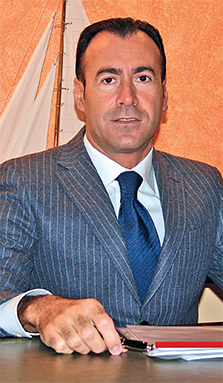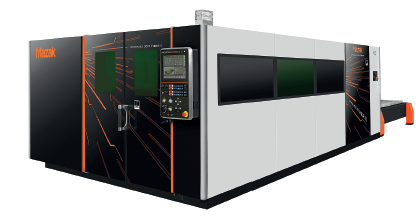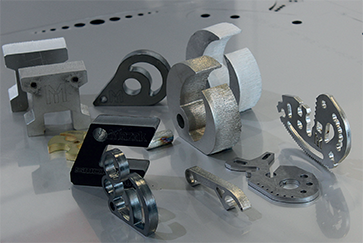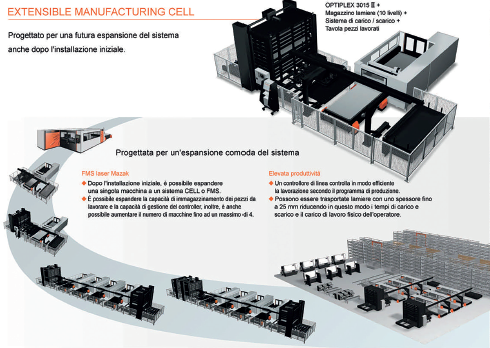 The last three years have seen significant change in Mazak’s laser business across Europe, not least the decision to combine the division with machine tools. We meet Gaetano Lo Guzzo, Director Mazak Laser Europe, to find out more.
The last three years have seen significant change in Mazak’s laser business across Europe, not least the decision to combine the division with machine tools. We meet Gaetano Lo Guzzo, Director Mazak Laser Europe, to find out more.
Three years is a long time in laser cutting and Mazak’s performance over this period proves the Mazak brand is becoming a real force in the sector. Laser sales grew by 188%, and the number of countries actively selling laser has increased from five to 13, with the same number of Technology Centres now showcasing laser equipment. What’s more five distributors now cover new territories including Sweden, Norway, Finland, Baltic countries, Spain and Portugal.
“It was already well known that Italy was the country in which Mazak laser products were more successful and we hoped that the same methods would give the similar results when applied to European market.
“The unification with the machine tool division brought very good results, although there is still work to do to achieve the perfect synergy. Crucially, our Headquarters in Japan is convinced that the laser business growth is a great benefit for the company from a technical and commercial point of view”.
TECHNICAL DEVELOPMENTS
We come now to a technical point, asking Mr Lo Guzzo about the specific benefits derived from the technical solutions and the commercial re-organisation. “Our sales re-organisation could not achieve these results without appropriate technology support regarding our laser products.
“The first action in this direction has been the expansion of the laser product range that we could offer to the market. In just a few years we developed and launched the OPTIPLEX series, for different table sizes and available with either a CO2 resonator or fiber technology, along with the entry-level machine, the OPTIPLEX Nexus. The key for the success of these machines is the development of our own cutting head called “Multi-Control Torch”.
 “The introduction to the market of our laser machines equipped with the Mazak Multi-Control Torch surpassed our expectations. It has proved to be extremely reliable enabling laser users to maintain stable working conditions during the cut.”
“The introduction to the market of our laser machines equipped with the Mazak Multi-Control Torch surpassed our expectations. It has proved to be extremely reliable enabling laser users to maintain stable working conditions during the cut.”
The cutting head first ensures a perfect integrity against the particles produced during the laser cut. It is then possible to adjust the laser beam diameter in the focal point and its vertical position thanks to the controlled motion of the laser beam. “In this way we can optimise the cutting conditions for the different types of material and related thickness. All our cutting processing are therefore realised utilising only one focal length,” says Mr Lo Guzzo.
He continues: “Of course, in order to do this we need a nozzle change device to utilise the correct nozzle diameter to the different focus conditions. The copper nozzle has been integrated into a stainless steel nozzle holder provided with cavities that can conveniently be taken from a female device placed in the final part of the cutting head. A non-contact sensor calibration system maintains as a constant the distance of the nozzle from the working material at any cutting speed.”
Alongside, there is an automatic device for the nozzle cleaning and an automatic focal point measurement. “In this way we have simplified the fiber laser cutting, which means it can now operate automatically to perform unmanned cutting operations on different material and thicknesses,” says Mr Lo Guzzo.
He is keen to demonstrate the range in action and leads us into one of the company’s Technology Centres to view an OPTIPLEX machine equipped with a 6kW fiber resonator performing cuts on stainless steel and aluminum alloy sheet 30 mm thickness.
The cuts performed are of excellent quality, with very little burr and with an acceptable edge roughness, far superior than what could be achieved by a CO2 laser.
“Our results on these alloyed steels contrast with what can be achieved with carbon steel. With the materials in Europe we can’t cut thicknesses of more than 25 mm, unlike in Japan where they cut to 40mm with the same laser system. The issue is that the European steel companies produce a lower quality mild steel.”
AUTOMATION
Mr Lo Guzzo is very keen to point out that all those innovations provided by Mazak, are matched well with the automation philosophy which guides the Mazak business and generates outstanding productivity and flexibility for customers.
“From a productivity point of view it is very important to work 24 hours a day continuously in normal conditions rather than having peaks of operations in extreme conditions. Multiple laser machines can be integrated into one or more material stockers as part of a single FMS system.
“Mazak automation solutions have been revised and updated over the years and continue to be a winning point for us.”
At the end of the conversation with Mr Lo Guzzo we ask about the sales of tube and bar laser cutting systems. “The positive performance on the laser sales reported at the beginning of this interview also includes laser tube machines which are finding a great benefit from the synergy between the machine tool and laser machine sectors. Lately most subcontractors decided to realise not only cut and bent components, but also the ability to provide a complete solution to the market. This is the reason why it is getting more and more important for them to have cutting tube machines as well as tooling machines able to perform good surface finishing.”
He continued: “At the next Tube exhibition 2016 in Dusseldorf, we will exhibit the tube cutting machine FG 220 MKII equipped with bundle system and the Space Gear 510 able to process 2D flat sheet, 3D specifically designed for formed parts and tubes. I can also confirm that our sales for tube lasers are in line with the targets received from Japan.”

